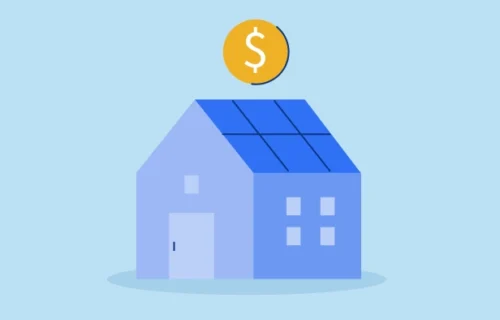
Connect with a Lima One expert today!
If you’d like to know more about this topic or see how it applies to your project, let’s talk.
Investor’s Guide to Wholetail Real Estate and Fix & Flip Investing
Real estate investors are resourceful, and so they are continually finding new ways to profit from real estate. One of the strategies currently growing in popularity is called wholetailing. This middle ground between wholesaling properties and a true fix and flip gives investors another option that can lead to profits.
In this post, we’ll discuss what wholetailing is, why investors are choosing it, and how an investor can execute the wholetail strategy.
What is Wholetailing in Real Estate?
Wholetailing in real estate is a hybrid investment strategy that combines elements of wholesaling and house flipping. It involves purchasing a distressed property at a discount, making minimal repairs or improvements, and then selling it to a retail buyer for a profit—usually by listing it on the Multiple Listing Service (MLS).
The wholetail name and meaning come from the combination of wholesale and retail strategies. A wholetail investor completes the purchase transaction and takes title on the property instead of assigning the contract at closing for a wholesale fee. The investor then quickly sells the property (often in 30 days or less) to a retail buyer. Usually, the investor does little to no rehab improvement to the property, unlike a flip.
Benefits of Wholetailing in Real Estate
- Higher profit potential than wholesaling, with margins often exceeding the 5-10% typical in wholesale deals.
- Faster closing and quicker profits compared to full renovation projects.
- Access to a wider buyer pool, including both investors and retail buyers, that can lead to higher resale prices.
- Lower risk compared to full renovations because less capital is tied up in repairs.
- The wholetailing strategy can work in some locations with regulations against wholesaling real estate.
Wholetailing Compared to Traditional Real Estate Strategies
Wholetailing differs from traditional real estate strategies in several ways:
- Compared to wholesaling:
- Wholetailing involves actually purchasing the property, while wholesaling typically involves assigning contracts without taking title on the property.
- Wholetailers sell to retail buyers, while wholesalers usually sell to other investors. This means wholetailers can often sell properties at higher prices.
- Compared to fix –and flip:
- Wholetailing requires minimal repairs, unlike the extensive renovations in fix-and-flip projects. Usually, a wholetail investor will do little more than clean out a property and maybe add a fresh coat of paint.
- A wholetail project offers a faster turnaround time and lower upfront costs than traditional flipping because no time or money is set aside for rehab. This allows wholetailers to reap profit faster and potentially do more deals in a year.
The Impact of Wholetailing on Fix and Flip Real Estate Investments
Wholetailing offers a unique dimension to fix and flip real estate providing investors with innovative ways to maximize returns.
How Wholetailing Affects Fix and Flip Strategies
Wholetailing affects fix and flip strategies by:
- Offering a faster alternative with lower upfront costs and reduced risk
- Providing a middle ground for investors who want to balance the speed of wholesaling with the higher profits of flipping.
- Allowing investors to adapt their strategy based on the specific condition of each property and current market demands.
Of course, wholetail investors will have to compete with flippers for the same properties, since both strategies target distressed homes.
But the bottom line is that wholetailing provides additional optionality for both wholesalers and flippers—giving another way to disposition a property for a profit.
Adapting to Market Trends with Wholetailing
To adapt to market trends with wholetailing:
- Stay informed about local real estate market conditions and buyer preferences.
- Adjust your property selection criteria based on current demand and supply dynamics.
- Be flexible with your renovation strategy, focusing on improvements that provide the best return on investment in the current market.
- Monitor interest rates and financing trends, as these can affect buyer demand and your potential profit margins.
How to Use Bridge Loans in Wholetail
When purchasing a property to wholetail, investors can use an all-cash offer. This strategy ties up cash for a while, but that may be feasible given the typically short hold time (30 days or less) for a wholetail property.
Another option is using a wholetail bridge loan to finance the property. At Lima One, our no-interest bridge loans work well for wholetail properties with little to no rehab planned while providing a no-seasoning option to refinance into a rental if the investor decides to hold the property.
Wholesale vs. Wholetail Real Estate Lending
Key differences between wholesale and wholetail include:
- Ownership: Wholetailers purchase the property, while wholesalers typically assign contracts. This means that wholetailers must have the cash on hand or financing to complete the purchase, versus wholesalers who can sometimes profit without putting any cash in the deal.
- Target buyers: Wholetailing targets retail buyers, while wholesaling focuses on other investors who are willing to buy properties in distressed condition.
- Property condition: Wholetail properties usually require minimal repairs or at least clean-outs, while wholesale properties are assigned as-is.
- Profit potential: Wholetailing generally offers higher profit margins than wholesaling.
Primary Challenges of Wholetailing Compared to Traditional Real Estate Strategies
Wholetailers need a plan to overcome certain challenges, including:
- Difficulty finding leads: Locating suitable properties for wholetailing is challenging, as it requires finding motivated sellers with homes in near-market condition. This can be more time-consuming than traditional wholesaling or fix-and-flip strategies, which can have a bigger buy box of distressed properties.
- Limited inventory: In some markets, the supply of distressed properties suitable for wholetailing may be restricted, making it difficult for investors to consistently find appropriate properties.
- Upfront capital requirements: Unlike wholesaling, wholetailing requires investors to purchase the property, tying up capital and potentially limiting the number of deals they can pursue simultaneously. At Lima One Capital, we can finance wholetail projects with no-interest bridge loans, but investors need to plan to put down a 20-25% down payment. This increases financial risk compared to contract assignment in wholesaling, which can be done in some cases without any cash outlay.
- Realtor commissions: Wholetailing often involves listing the property on the MLS, which means paying realtor commissions, reducing potential profits compared to direct sales to investors.
- Balancing rehab costs and profit margins: Wholetailers must carefully manage renovation expenses to ensure they don't eat into profits while still making the property attractive to retail buyers. This requires a delicate balance more present in fix and flips than traditional wholesaling.
- Market sensitivity: Wholetailing can be more susceptible to market fluctuations than wholesaling, as the strategy relies on retail buyers who may be influenced by factors like rising interest rates. Knowledge of local home values is key.
- Managing buyer expectations: Wholetailers must navigate the expectations of retail buyers, which can be more demanding than those of investor buyers in traditional wholesaling—especially when it comes to properties that need upgrades and/or repairs.
- Competition: The wholetailing market can be highly competitive, requiring investors to develop strong marketing skills and strategies to stand out and connect with potential buyers
These challenges highlight the need for careful planning, market knowledge, and adaptability when pursuing wholetailing as an investment strategy.
How does the timeline of wholetailing compare to wholesaling?
Wholetailing typically has a longer timeline compared to wholesaling, but it's still faster than traditional fix-and-flip strategies.
Wholesaling is the quickest strategy, with deals often completed in a week to a month. The wholesaler simply finds a property, gets it under contract, and assigns the contract to another investor for a fee.
The wholetailing process takes more time than wholesaling but less than a full renovation:
- Purchase: Unlike wholesaling, the investor actually buys the property.
- Minor repairs: The investor makes minimal upgrades that are usually cosmetic and not structural. This might include painting, cleaning, or addressing safety issues.
- Listing and sale: The property is then listed for sale on the MLS and elsewhere and sold to a retail buyer or investor at market price. In contrast to MLS wholesaling, a wholetail investor usually can create more profit margin while avoiding many regulatory concerns.
While wholetailing requires more time than wholesaling due to the purchase, minor repairs, and resale process, it's still considerably faster than traditional flipping. Many traditional flips can take 60-120 days for typical projects and longer for extensive ones, whereas wholetailing aims for a quicker turnaround of 2-4 weeks to minimize holding costs.
The extended timeline of wholetail real estate compared to wholesaling is balanced by the potential for higher profits, as investors can often generate higher returns than just collecting a wholesaling assignment fee.
Cash flow for wholetail vs. wholesale
How does wholetailing impact cash flow compared to other strategies? Wholetailing a property creates some significant differences, including:
- Faster turnaround: Wholetailing generally offers quicker cash flow than traditional fix-and-flip strategies. Since only minimal repairs are made, properties can be sold more rapidly, allowing investors to realize profits sooner.
- Higher profits than wholesaling: While wholesaling typically yields profits of around 5-10% of a property's value, wholetailing can potentially generate much higher returns. For example, a property bought for $50,000 and sold for $80,000 after $8,000 in repairs could net a profit of $16,200, significantly more than a typical wholesale deal.
- Upfront capital requirements: Unlike wholesaling, wholetailing requires purchasing the property, which ties up more capital initially. This can impact short-term cash flow but potentially leads to higher returns—especially if a wholetail investor can finance the property with a wholetail bridge loan lender.
- Reduced holding costs: Compared to full rehab projects, wholetailing involves shorter holding periods, which minimizes ongoing expenses like utility fees, insurance, and loan interest.
- Wider buyer pool: Wholetailing attracts both retail buyers and investors, potentially leading to faster sales and competitive offer situations that can lead to improved cash flow compared to strategies targeting only investors.
- Leveraging real estate agents: Wholetailers can use real estate agents to sell properties on the MLS, potentially speeding up the sales process and expanding the buyer pool. Wholesalers may have to limit their marketing activities based on local regulatory requirements.
By balancing the need for some upfront investment with the potential for higher returns and faster sales, wholetailing can offer a favorable cash flow profile for investors who can manage the slightly increased risk and capital requirements compared to wholesaling.
Why Choose Lima One Capital for Wholetail and Fix and Flip Investments
Lima One offers a diverse suite of loan solutions for any investor strategy, including wholetailing bridge loans and fix and flip loans. We also offer rental loans and new construction loans.
That’s why investors choose Lima One for their private lending needs. In addition to a full suite of loan products, Lima One also gives investors competitive rates, flexible terms, and fast approvals. Get a quote today on your next wholetail bridge loan, fix and flip loan, or other residential real estate investment.
Subscribe for More Insights
Get the latest industry news & Lima One updates.









